If you ever spend any time in Ireland you will come across the stone forts, also known as ring forts and cashels. They were usually farming settlements and normally date from between 500-900 CE, though they were reused later as well. Many are testaments to the brilliance of drystone walling and the skill of the builders as they are still standing today. Some were ‘fixed’ at later dates of course. They vary in purpose and in style but they usually have some common features. For example the majority contain stairs worked into the side of wall of the fort. These forts were not roofed over to create one residence, in fact the exterior walls were used for protection, from the weather and attack, and houses either of stone or wood were built inside. The design of the stairs allowed people to access the top of the walls simply. The forts often also command the high ground, giving an excellent view to any possible attackers, as well as providing a defensive position. Many stone forts feature souterrains, these are holes or tunnels in the walls of the forts. There is ongoing debate as to whether they were used for storage, for escape or both.
The five stone forts featured below are each good examples of a different aspects of stone fort building. The sites below are listed in no particular order.
Lecanabuile
Lecanabuile and the next stone fort listed Cahergall in County Kerry are excellent examples of two forts built close together. These are two communities which would have interacted. You can see Cahergall in the distance in most of the photos below. Lecanabuile dates to the 9th or 10th centuries CE. The circular enclosing wall is more than 3m thick and roughly 20m in diameter. There has been some reconstruction. The remains of the round house you can see in the photos below is relatively contemporary to the outside walls and a souterraine inside leads to a gap between the external walls. The external walls were built by building two stone walls and filling the interior. The square building you can see attached to the round one is a later addition showing the ongoing use of these stone forts. The other structures you can see inside the walls are later again.
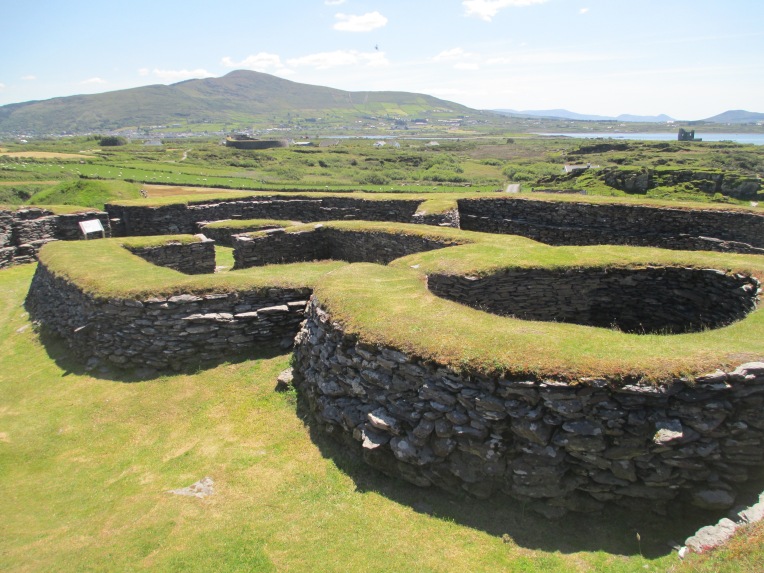
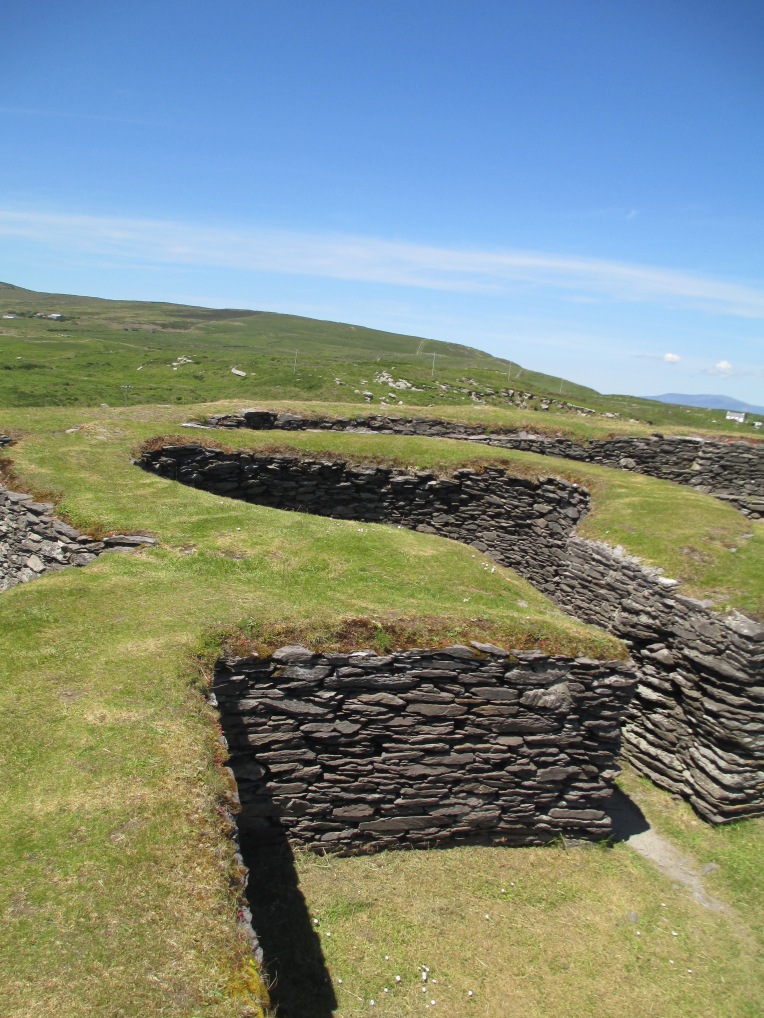

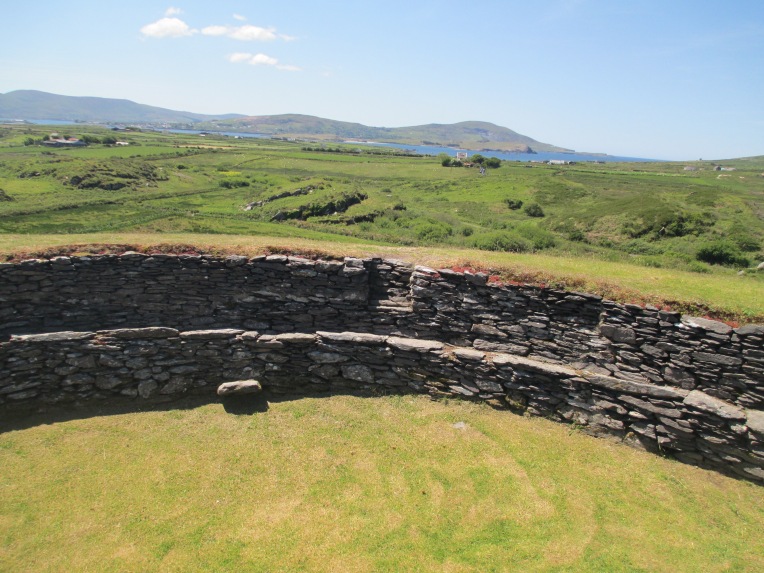
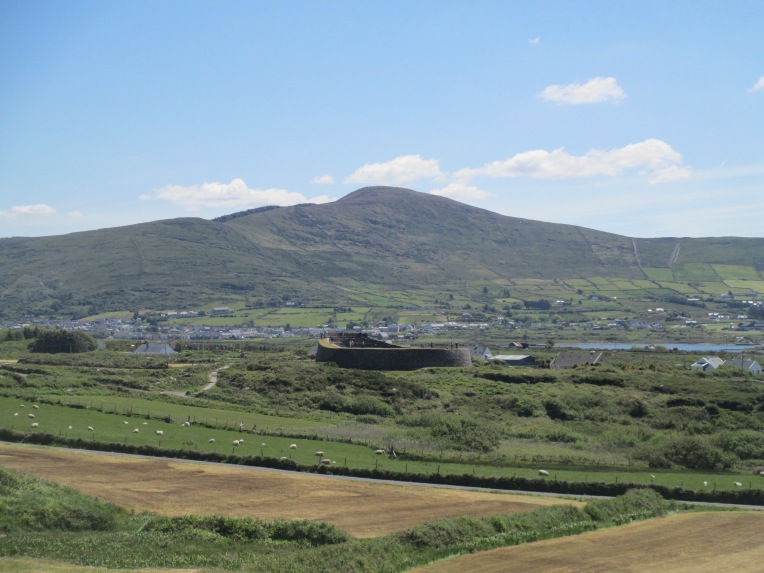
Cahergall
Cahergall, as you can see from its appearance in the earlier photos, is just down the hill from Lecanabuile. Its stone walls are very impressive as they tower over the surrounding landscape. The walls have been reconstructed to an extent in recent times. It was built around 600 CE and the walls stand at around 6m high and 3m thick. There is a stone house inside that is original and would have once likely housed someone important. Like Lecanabuile it is entirely drystone walled.
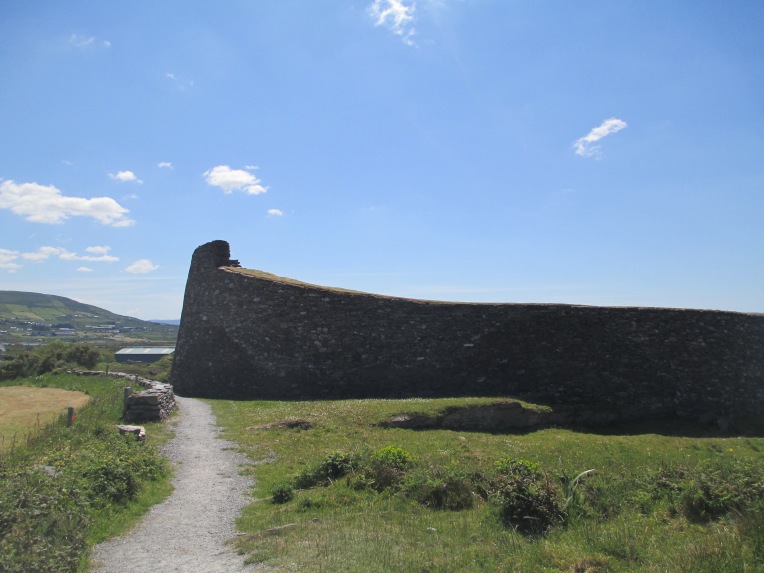
Dunbeg
Dunbeg is a little different to the other stone forts in that it is a promontory fort. It was built around the 8th or 9th centuries CE and was occupied again in the 10th and 11th centuries CE. It stands on a sheer cliff on the Dingle Peninsula. One of the key issues with it standing on a sheer cliff is that the fort is currently falling into the sea, as can be seen in several of the photos below. It also has extensive earthwork defences surrounding it. There was also probably settlement on the site before the building of the fort. Behind the earthworks and the drystone wall there is the clochain, or beehive hut. The life in the fort would have been centred on the two hearths inside the beehive. The main entrance is currently blocked due to instability, but you can see how it is structured in the photos below. Additionally there is a souterrain which runs from the inside to the outside of the fort. There was probably also more buildings originally but they may have been claimed by the coastal erosion.
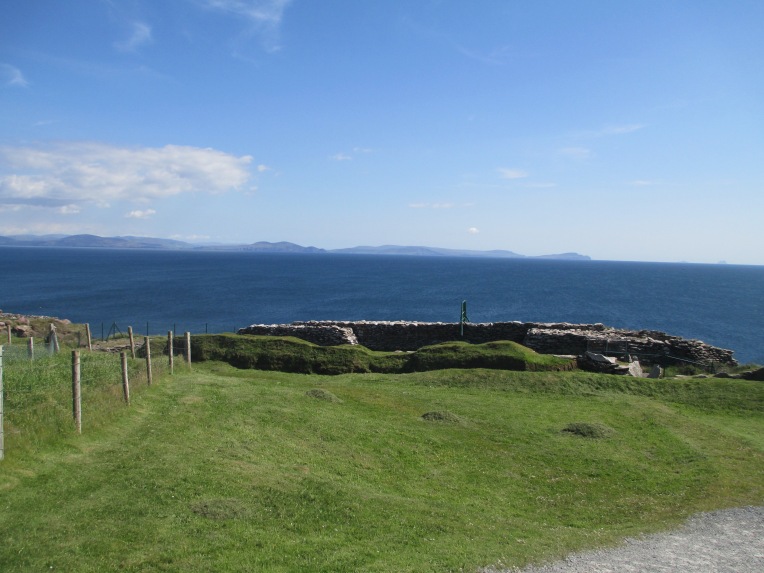

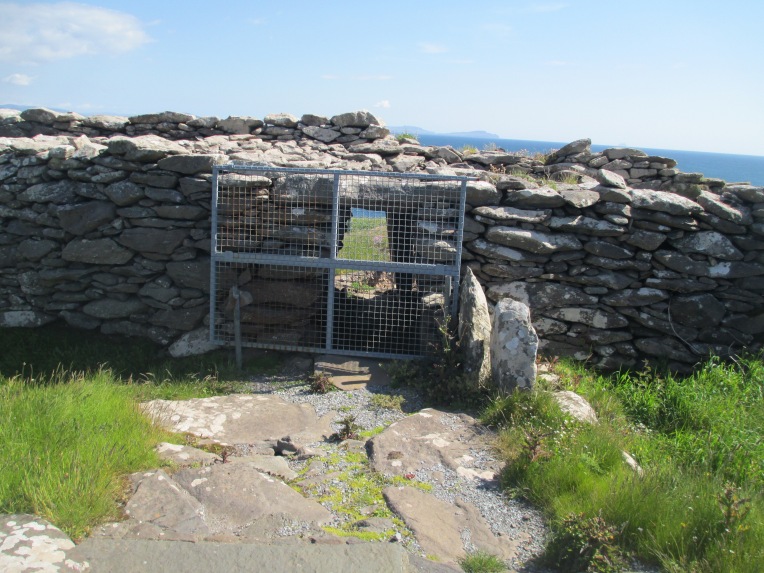
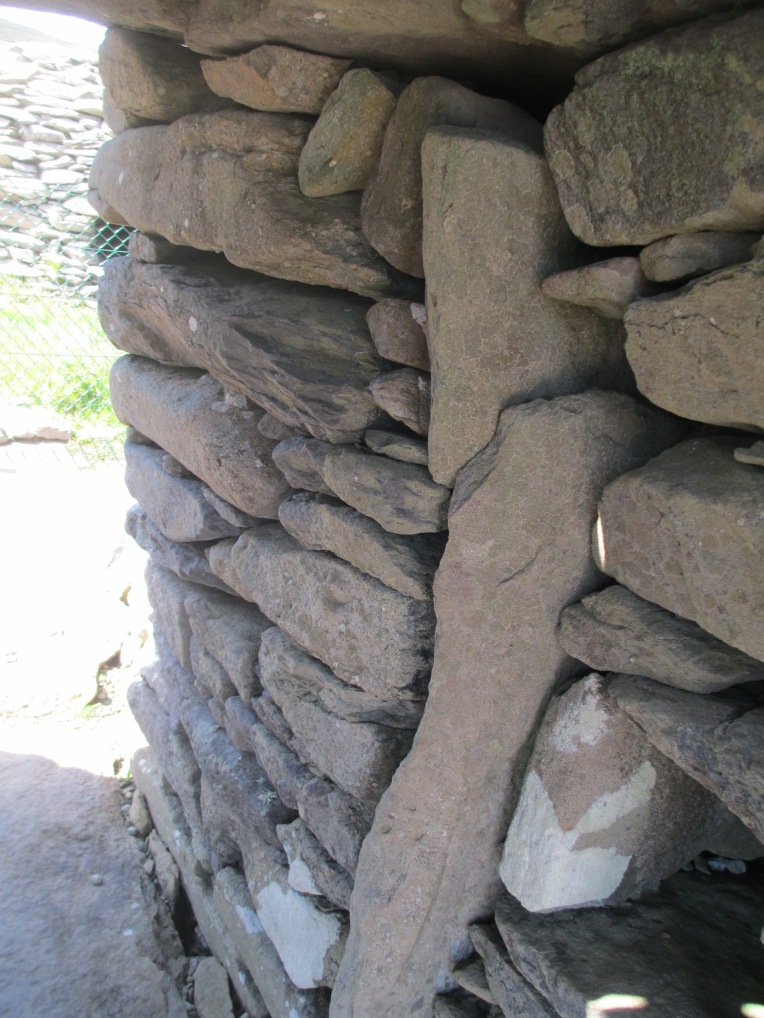


Grianan Aillgh
The original hill fort in this position would have been built probably sometime around the 1st century CE, but it was the royal citadel of the Ui Neill family from the 5th to the 12th century. It stands in Donegal. There is also a burial mound nearby which dates to roughly 3000 BCE and this might have attracted the builders originally. The walls stand about 4.5m thick and about 5 m high, but there was fairly extensive rebuilding work in the 1870s. The fort is surrounded by three earthen banks and it is believed that the track that runs through them and up to the fort might be the remains of an ancient roadway.

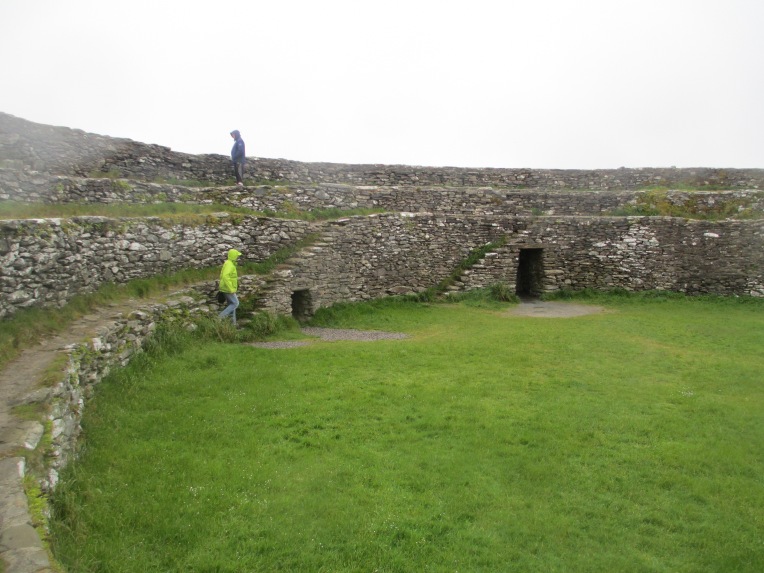
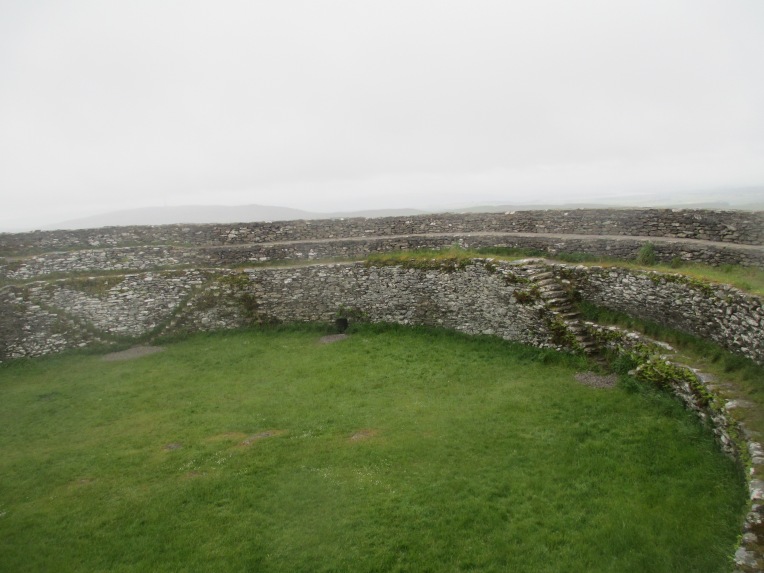



Staigue
Staigue stands in County Kerry and happened to be the first fort I saw and it remains one of the most impressive. Dating it is uncertain but it is probably from the early centuries CE. The walls are up to 5.5m high, 4m thick and 27.4m in diameter. The steps in the walls run in a distinctive X shape possibly to make it possible for people to pass each other running up and down. There are no surviving buildings inside the walls, but there are two small chambers contained in the walls which might have been for storage. There would have been houses inside; they just either weren’t built in stone or haven’t survived. The top of the walls command an impressive view of Kenmare bay and would have given the local chieftain ample warning of any attack or visit from the sea. The drystone walling here is particularly impressive and seems to be largely original.
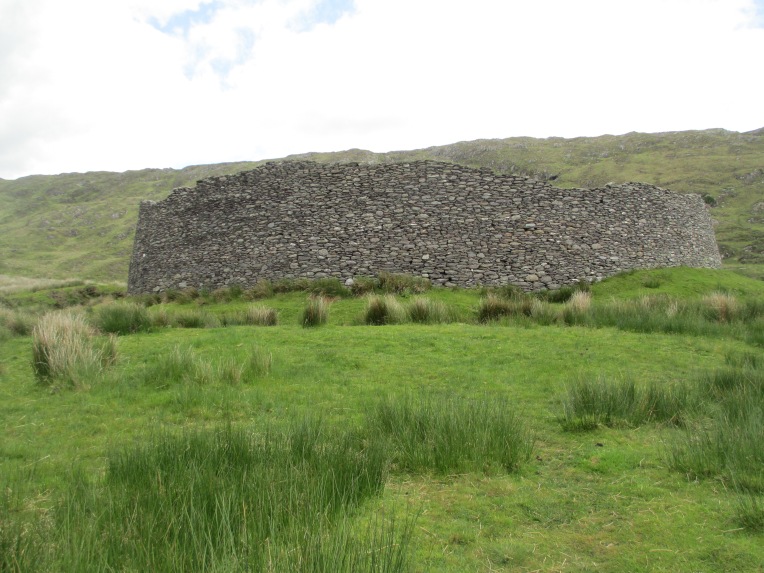

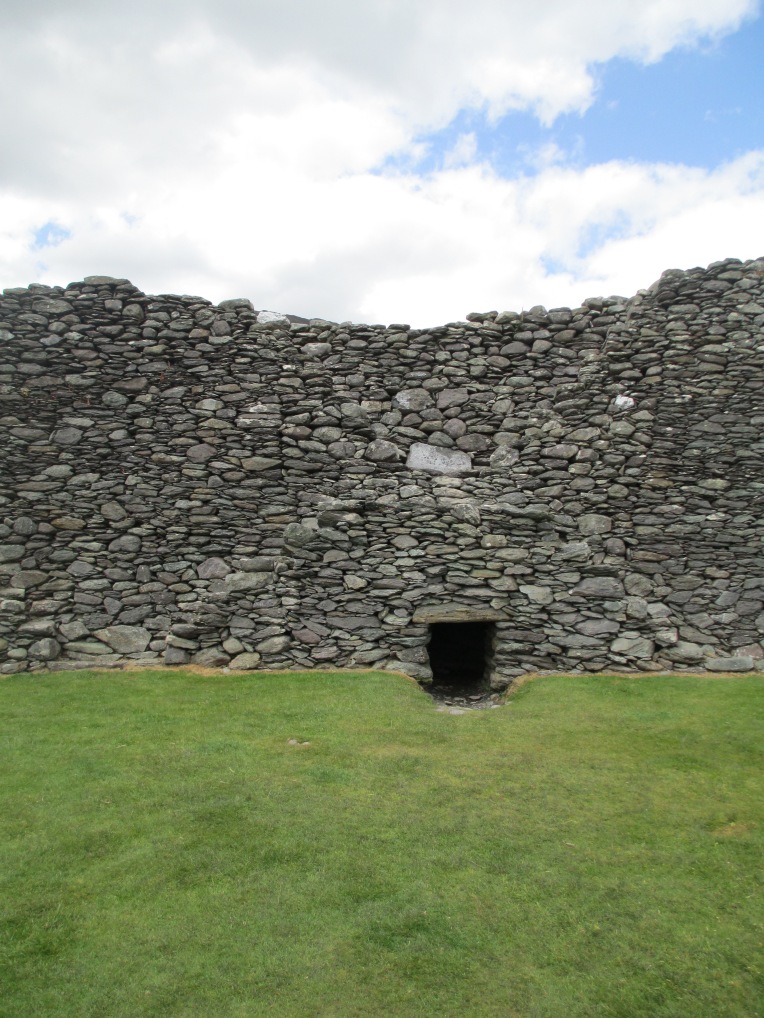


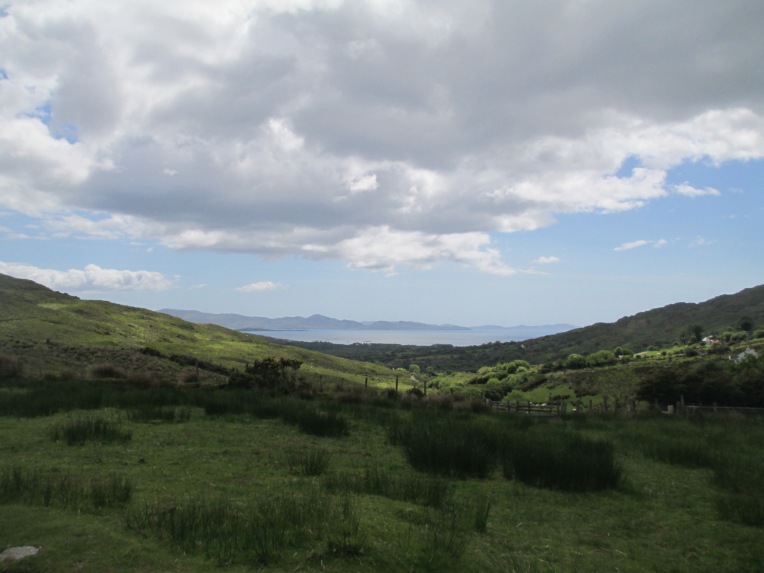
These stone forts are only examples of the thousands in Ireland, though not all of them are in anywhere near as good condition. If you ever get the chance they are absolutely worth a visit.
For more information see: http://heritagecouncil.ie/unpublished_excavations/section13.html
References: http://www.theringofkerry.com/cahergal-leacanabuaile-forts
http://www.theringofkerry.com/staigue-fort
http://www.discoverireland.ie/Arts-Culture-Heritage/grianan-of-aileach/73795
Site visits in 2015
All the photos are mine.


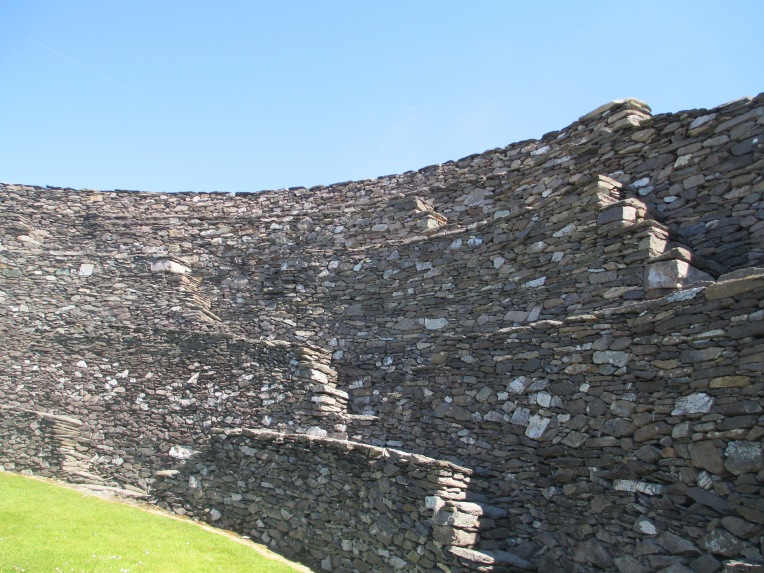

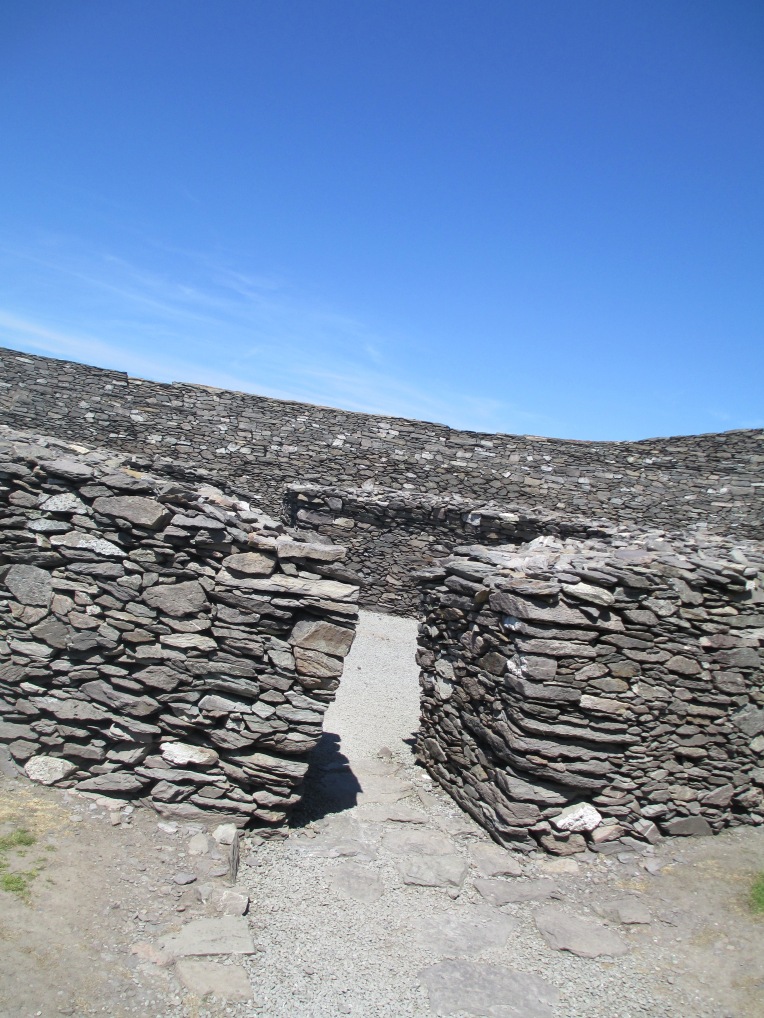

Fascinating! I’d love to these sometime myself.
LikeLike
Thanks, they are really lovely. If you ever get the chance it is worth it.
LikeLike